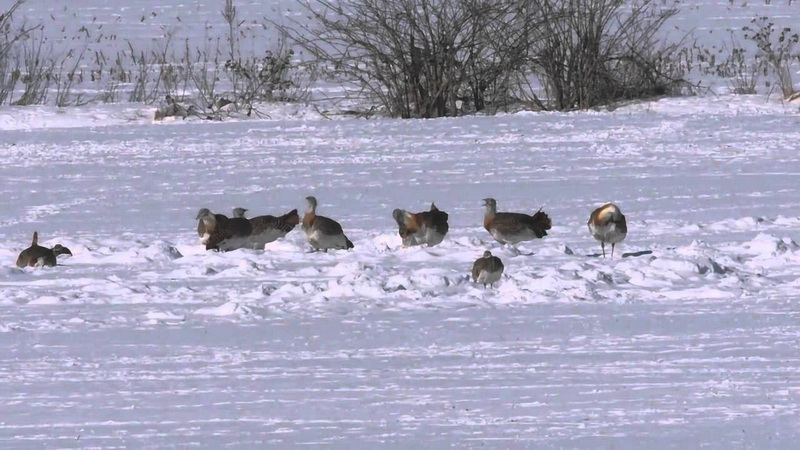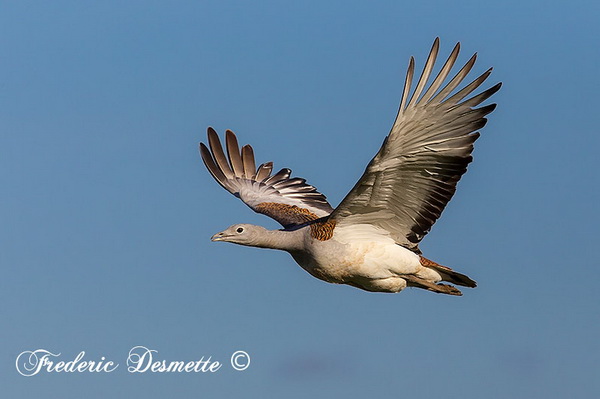Great Bustard lives in small flocks, where the number of females is bigger than males. Number of males is smaller because they were allowed to be hunted, unlike females which were under protection.
On a large and clear expanses Great Bustard acts peaceful. The body of this bird is in the horizontal position, and the neck is at the right angle. Some of them pasture, some collect insects or rest, while only two or three birds monitor the area - they guard. During the winter months, a few small flocks gather in one.

The primary method of transport is by walking. In case of an emergency, bird freezes in one place. Then tries to walk away, and if it doesn't menage to avoid a danger, this bird runs 3-4 steps. If this is not enough, Great Bustard flies away. It is believed that the fly speed is 50 km/h.

During the "wedding dance", in the spring, Great Bustard can be easily seen. In the summer, Great Bustard is hard to spot, because it is active only early in the morning, and late at night. In September it can be seen again flying and gathered in flocks. Adult Great Bustard has a few enemies in the wild, the eggs and young specimens are the ones who suffer.



